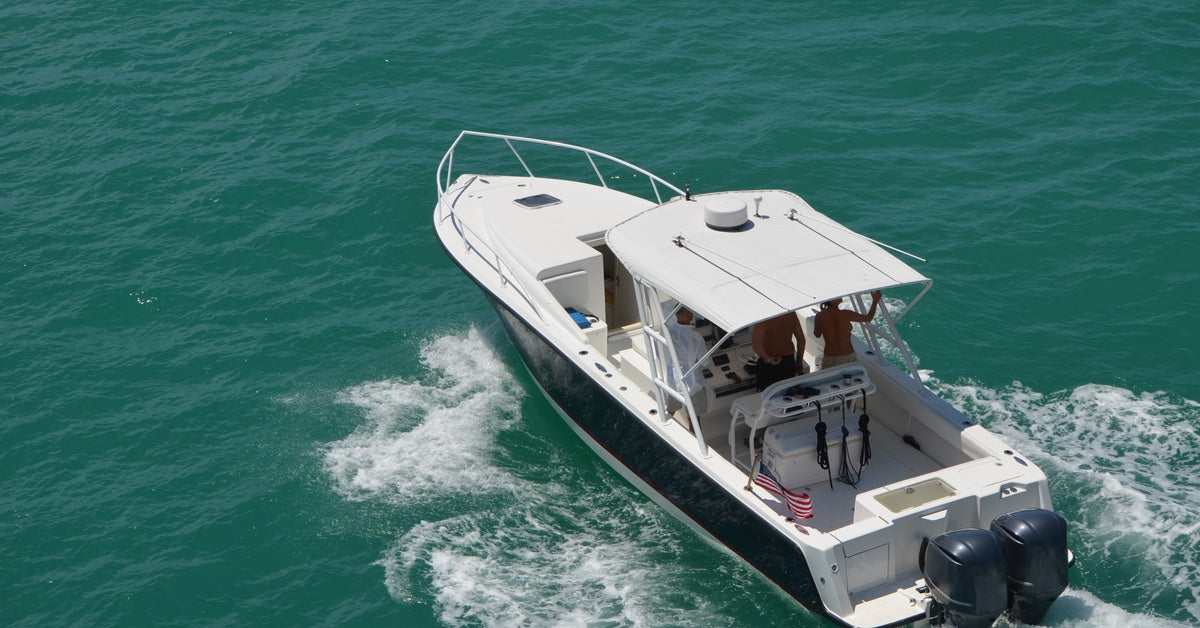Batteries are central components for boating, powering everything from your GPS to trolling motors for smoother sailing. Choosing the right battery affects your boat’s performance, reliability, and longevity.
For years, boat owners relied on traditional batteries, but the emergence of lithium-ion batteries has fundamentally changed the game. In this post, we’ll compare lithium and traditional boat batteries, offering a clear understanding of which type is best suited to your needs.

Traditional Boat Batteries and Their Strengths
Traditional boat batteries, or lead-acid batteries, come in several variants. Each type caters to specific needs and offers its own benefits.
Flooded Lead-Acid Batteries
Flooded lead-acid batteries are one of the oldest and most commonly used types of boat batteries. They operate by submerging lead plates in an electrolyte solution made of water and sulfuric acid. Known for their affordability and reliability, these batteries are widely available and can deliver dependable power for various boating applications.
However, they require regular maintenance, such as checking electrolyte levels and refilling with distilled water, for optimal performance and longevity. Additionally, due to their design, flooded lead-acid batteries must be installed in a well-ventilated area to prevent the accumulation of harmful gases.
Absorbed Glass Mat (AGM) Batteries
AGM batteries offer a maintenance-free alternative to traditional flooded lead-acid batteries. These batteries are designed with fiberglass mats that absorb and hold the electrolyte, making them spill-proof and safer to use in confined spaces.
AGM batteries provide reliable performance, have a lower self-discharge rate, and can handle deep cycling better than their flooded counterparts. They’re ideal for boaters who prioritize convenience and durability, as these batteries require no regular maintenance and are less susceptible to vibration damage. However, AGM batteries typically come at a higher cost.
Gel Batteries
Gel batteries are another popular choice for marine applications, using a gel-like substance to suspend the electrolyte. The battery’s operation reduces the risk of leakage and makes them highly resistant to vibration and shock.
Unlike AGM batteries, gel batteries are particularly well-suited for environments with high-temperature variations and are less likely to suffer from overcharging damage. They also have a longer lifespan when properly maintained.
However, gel batteries require specialized chargers to avoid performance issues and are generally more expensive, which may deter some users. Despite these drawbacks, gel batteries are an excellent option for those seeking reliable, maintenance-free power storage.
Enter Lithium Boat Batteries
Lithium batteries have gradually become the go-to option for modern boaters. These batteries use lithium-ion chemistry for a longer lifespan. They can last up to 10 years or more, depending on usage. In addition, they can be discharged almost completely without damage (between 80 and 100 percent).
However, not all lithium batteries are the same. The two main types of lithium batteries seen in marine applications are lithium iron phosphate (LiFePO4) and lithium nickel manganese cobalt oxide (NMC). LiFePO4 batteries are particularly popular due to their stability, longevity, and safety.
When choosing between LiFePO4 and NMC batteries for boating applications, consider their unique characteristics. Each type of battery presents advantages and disadvantages depending on your priorities, whether it’s maximizing safety, longevity, or energy density.
Marine Applications for Lithium Batteries
While most batteries work in marine environments, lithium cells offer key advantages that make them even more suitable for use on boats. Here are some examples of their application:
- Electric propulsion systems: Lithium batteries are used to power electric propulsion systems for boats and yachts, offering efficient and eco-friendly alternatives to traditional fuel engines.
- Navigation and communication equipment: These batteries provide reliable energy for onboard devices such as GPS systems, radios, and navigation aids.
- Energy storage for renewable sources: Lithium cells store energy generated from renewable sources like solar panels or wind turbines installed on marine vessels.
- Backup power supplies: Lithium batteries are a dependable backup power solution during emergencies or outages.
- Auxiliary systems: These batteries power various auxiliary systems, including lighting, refrigeration, and water pumps, for smooth operation during voyages.
With so many use cases, it’s easy to see why so many boaters choose lithium batteries.

Performance Comparison: Traditional Versus Lithium Batteries
In the battle of traditional and lithium batteries to decide which is best for your boat, there are a few key factors to keep in mind.
Energy Density
Lithium batteries have a much higher energy density than traditional batteries, offering more power in a lighter, more compact design.
Weight
Lithium batteries are also much lighter than traditional batteries, which makes them ideal for applications where weight is a critical factor.
Lifespan
Between the two, lithium batteries typically have a longer lifespan and offer more charge cycles than traditional batteries like lead-acid or nickel-cadmium.
Maintenance
Traditional batteries often require regular maintenance, such as adding water to lead-acid batteries, while lithium batteries are virtually maintenance-free.
Environmental Impact
Lithium batteries usually have a smaller environmental footprint due to their longer lifespan and greater recycling potential, whereas traditional batteries can contain harmful substances like lead and cadmium.
Cost
Lithium batteries generally have a higher upfront cost compared to traditional batteries, but their longevity and efficiency often offset this expense over time.
Charging Speed
Which batteries charge quickest? Lithium batteries charge faster than traditional batteries, making them more suitable for modern applications requiring hasty turnaround times.
Taking Care of Your New Battery
Proper boat battery maintenance is essential for optimal performance and longevity. Regularly inspect the battery for signs of damage, corrosion, or loose connections. Clean the terminals with a mixture of baking soda and water to prevent buildup that can interfere with performance.
If you choose a lead-acid battery for your boat, check the electrolyte levels frequently, refilling with distilled water as needed. Avoid overcharging or undercharging the battery by using a compatible charger and monitoring the charging process.
Additionally, always store your battery in a cool, dry place when not in use, which goes for traditional or lithium batteries. With consistent care, your battery will remain reliable and ready for countless boating adventures.
Find the Best Battery for Your Boat
When comparing lithium and traditional boat batteries, it’s easy to see why lithium cells are often the better option. If you’re a tech-savvy, frequent boater looking for a lightweight, long-lasting, and efficient option, these batteries make an excellent investment.
At PowerHouse Lithium, we’re the leaders in reliable, next-generation battery technology. Check out our lithium-cranking battery

